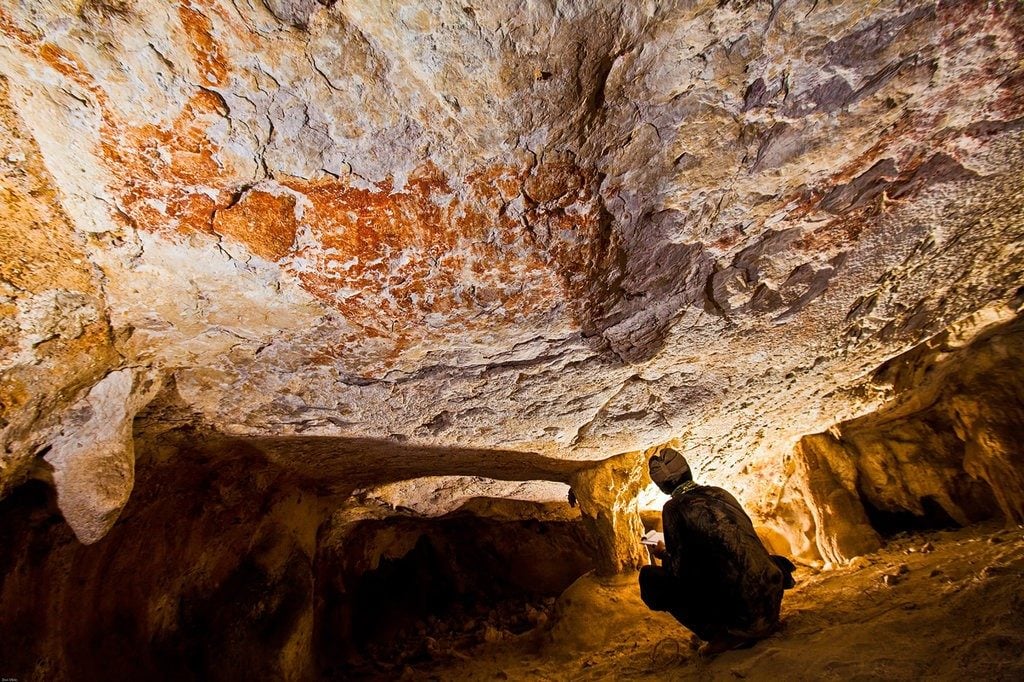Art World
Archaeologists Have Discovered the Oldest Figurative Cave Painting in the World, and It Is Very Weird
The imagery shifts our understanding of when and where humans started depicting imaginary figures.

The imagery shifts our understanding of when and where humans started depicting imaginary figures.

Karen Chernick

A newly discovered cave painting on the central Indonesian island of Sulawesi is likely to shift the timeline of art history and reconfigure our understanding of the earliest visual art.
A painted panel dating back at least 43,900 years, discovered accidentally by Indonesian archaeologist Pak Hamrullah in 2017, shows eight figures with weapons in hand approaching wild pigs and small native buffaloes. Some of the figures are what archaeologists define as therianthropes, fantastical entities portrayed with a combination of human and animal characteristics (one has a beak, another has a tail).
“The hunting scene is—to our knowledge—currently the oldest pictorial record of storytelling and the earliest figurative artwork in the world,” according to a scientific paper published this week in Nature.
The work likely portrays either a hunting scene or a shamanic ritual, but the actual significance of the panel remains a mystery. What researchers can deduce, however, is that this artwork shifts our understanding of when—and where—humans started depicting imaginary figures not drawn directly from life.
The Sulawesi painting predates a lion-headed figurine previously thought to be the world’s oldest therianthrope by 4,000 years, and is 20,000 years older than the birdman figure found in the hunting scene in the French Lascaux caves.
“Our findings therefore further suggest that the first known indication of religious-like thinking—the ability to conceive of non-real entities such as therianthropes—comes not from Europe as has long been assumed, but occurs at least 43.9 ka [43,900 thousand years ago] in Sulawesi,” the study notes.
Adam Brumm, one of the study’s authors and an archaeologist at Griffith University in Australia, told the New York Times that his team was “completely blown away” by the find.
“We had never seen anything even remotely like this before in the hundreds of cave art sites we’d documented [on Sulawesi].”